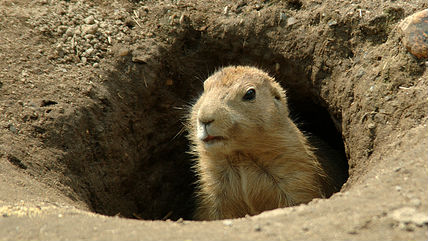A Startling New Approach for Siting a Nuclear Waste Dump.

To little notice, an advisory commission charged with figuring out a permanent solution for America’s nuclear waste has issued a new approach for siting a waste repository that just might work. It might succeed because it’s based on a critical change in attitude. The commission respects that, at its white hot core, the siting of a nuclear waste repository is not a technical or scientific challenge nearly so much as it is an emotional issue. And because they accept that inescapable truth, these recommendations offer true promise not just for dealing with nuclear waste, but as a model for risk management policy making in general.
The Blue Ribbon Commission (BRC) on America’s Nuclear Future was created after the Obama administration upheld a campaign promise to the important electoral state of Nevada (home of Senate President Harry Reid), and cut the funding for development of a permanent high level nuclear waste repository inside Yucca Mountain, near Las Vegas. The President’s decision capped more than two decades of resistance to Yucca, resistance that raised scientific and technical questions but was actually about something much deeper. The real reason many of the people of Nevada resisted Yucca Mountain so fiercely was that they felt that the risks of nuclear waste were being jammed down their throats.
Originally, three sites were being considered for a waste depository. None wanted it, and the political contest over where it would go led Congress to pass a law in 1987 taking two sites off the list. The only site to be developed would be Yucca Mountain. Guess how that made the people of Nevada feel! Many were already worried about the risks of nuclear waste, but along came Congress, imposing the risk on Nevada and essentially pouring gasoline on what so far had only been a smoldering fire. The law essentially imposing America’s nuclear waste on Yucca Mountain was immediately nicknamed the “Screw Nevada Act” and its passage fired up the fierce resistance that has cost America billions of dollars, kept the federal government from fulfilling a decades-old commitment to support nuclear power by taking the industry’s radioactive spent fuel off its hands, and more profoundly, has served as one more example, to many, that the federal government has become distant, imperious, and no longer a government by the people.
The BRC states unequivocally that the Congressional mistake of imposing the facility on Yucca Mountain is why the process failed, and proposes a profoundly different approach. The first of their eight recommendations is for “a new, consent-based approach to siting future nuclear waste management facilities.” And when they say consent, they mean more than the usual platitude of ‘openness and transparency and stakeholder involvement’, which too often merely means ‘We’ll listen to you, local community, before we make up OUR minds”. Defining consent, the commission says “…this question ultimately has to be answered by a potential host jurisdiction, using whatever means and timing it sees fit.” In other words, local communities that meet the scientific criteria for such a facility will essentially have the final say about whether it goes there or not. The potential host communities, and the local/state/tribal governments involved, essentially have VETO POWER! Stunning, eh?
Wise, too. The BRC is implicitly trying to address what research into the psychology of risk perception has learned, that any risk evokes more fear when it’s imposed than when it is accepted willingly, voluntarily. They have offered a precedent-setting approach to embed true respect for people’s feelings into risk management policy making. But can it work? What community is going to accept a high level radioactive waste dump? Or volunteer to host one, which the BRC approach also encourages. Volunteers, for a radioactive waste dump?
Yes! This process is modeled on one being used successfully in Sweden and Spain and France. It has already worked in Finland, where a nuclear waste repository proposed roughly a decade ago is close to opening…in a community that actually competed with another site to win the jobs and taxes and national government payments that come with hosting such a facility. And a similar process has worked in the United States, where years of discussion and respect for local concerns helped the Department of Energy win public acceptance to build the Waste Isolation Pilot Plant (WIPP) near Carlsbad New Mexico, which has been storing radioactive waste from the nation’s nuclear weapons program for more than a decade.
The BRC notes that the WIPP siting process, and the ones in Europe, succeeded because they respected the primary importance of “public trust and confidence” and used ‘transparency, flexibility, patience, responsiveness, and a heavy emphasis on consultation and cooperation.” Those processes worked because the communities were listened to. Their feelings were respected. That allowed them to think the issue through more carefully, because they knew in the end they could decide for themselves whether to take the risk, and reap the benefits, or not.
Choice is only one of many psychological characteristics that make risks feel more scary, or less. The larger point here, and the great hope for the approach the BRC has taken, is that this new attitude toward risk management recognizes that risk is a matter of feelings, not just facts, and that those feelings are central to how people behave, so they must be respected and accounted for as policy is being made, if that policy is to succeed. Across a broad range of issues, policy making that considers not just the facts of a risk but how those facts feel will be more successful, more efficient, make us safer, and perhaps even repair some of the public’s waning trust in government. We should all hope that Congress follows the BRC’s thoughtful advice.





